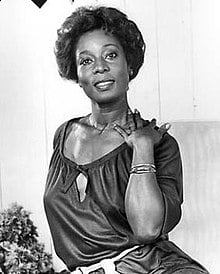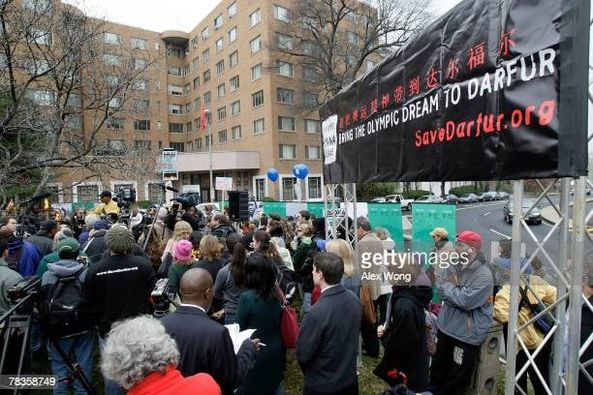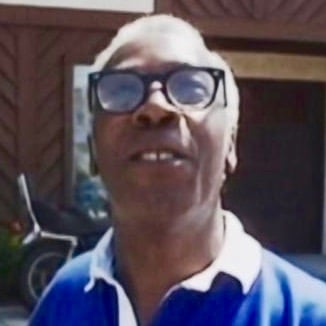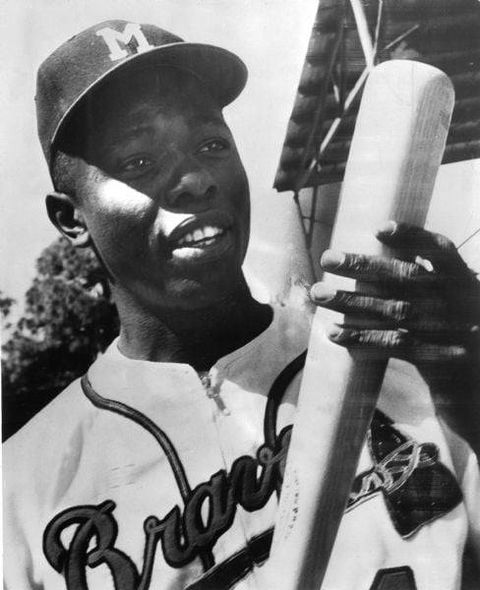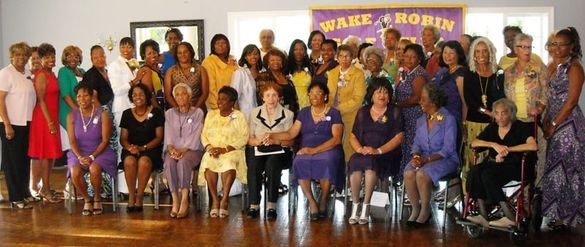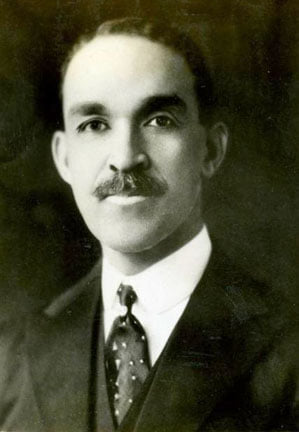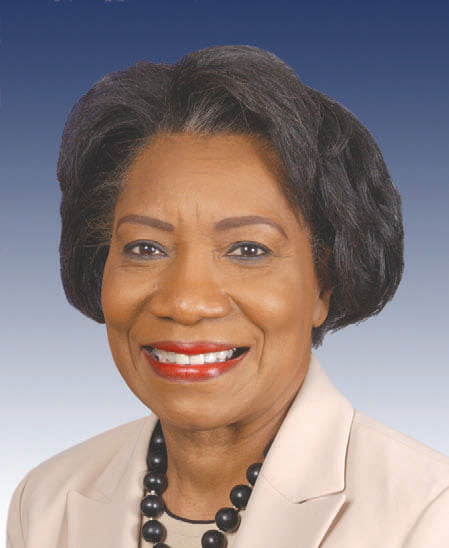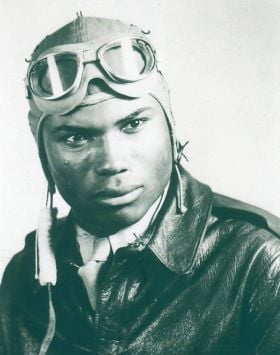GM –FBF – Today’s American Champion event was Christopher’s murder spree began on September 22, 1980, when he killed three black men and one boy in the space of 36 hours with a .22 caliber sawed-off rifle.These murders led to the media epithet of the .22-Caliber Killer A 14-year- diesold boy, Glenn Dunn was the first victim, shot outside a supermarket in Buffalo on September 22. Harold Green, 32, was shot the next day while dining at a fast food restaurant in Cheektowaga. That same evening, 30 year old Emmanuel Thomas was shot while crossing the street to his home, only 7 blocks away from Glenn Dunn’s murder. On September 24, Joseph McCoy was shot to death in Niagara Falls.Today In OUR HISTORY – April 29, 1981 – Emmanuel Thomas dies.Buffalo, N.Y., grand jury indicted Pvt. Joseph G. Christopher of the U.S. Army on murder charges stemming from the racially motivated slayings of three Blacks in September, 1980He committed two more murders on October 8 and October 9, both times bludgeoning his victims to death and then cutting their hearts out.[4][5] The bloodied, beaten, and mutilated body of 71 year old Parler Edwards was found in the trunk of his taxi cab parked in Amherst on October 8. Forty-year-old Ernest Jones was found in similar condition beside the Niagara River in Tonawanda on October 9. Jones’ blood-spattered taxi was found 3 miles away in Buffalo.Collin Cole, 37, was attacked in a Buffalo hospital on October 10. A white man matching the description of the .22 Caliber Killer tried to strangle him to death. Cole said the man snarled, “I hate n*****s” at him before trying to kill him. He was saved by the arrival of a nurse, and though severe damage had been done to his throat, he did survive the attack.These initial murders went unsolved at first, and Christopher enlisted in the United States Army in November, being stationed at Fort Benning. He soon received Christmas furlough and arrived in Manhattan on December 20, where, on December 22, he committed four more murders and two more attacks; this time stabbing his victims to death, thus earning the moniker of the Midtown Slasher.Twenty-five year old John Adams was stabbed at around 11:30 a.m., but survived. 32 year old Ivan Frazier was attacked next about two hours later. He managed to deflect the blade with his hand, suffering only minor injuries. Luis Rodriguez, 19, was the first murder of the day; at around 3:30 p.m., he was stabbed to death. At 6:50 p.m., 30 year old Antone Davis was stabbed to death. Around 4 hours later, 20 year old Richard Renner was stabbed and killed. Finally, a black John Doe was stabbed to death near Madison Square Garden just before midnight.He then returned to Buffalo and fatally stabbed another black man, 31-year-old Roger Adams, on December 29 and 26-year-old Wendell Barnes in Rochester on December 30. He committed another three attacks on New Years Eve and New Years Day (Albert Menefee, Larry Little, and Calvin Crippen) in Buffalo, but all three victims survived), before returning to Fort Benning in January.When back at Fort Benning, Christopher attacked a black soldier with a paring knife in what was described as an unprovoked attack on January 18. The soldier survived the attack and Christopher was placed in the fort’s stockade, where he attempted suicide by cutting himself with a razor. In a subsequent psychiatric session, he told a psychiatrist that he “had to” kill blacks.[1] This admission caused Christopher’s home to be searched by the police. There the police found evidence linking Christopher to three murders, which led to his indictment in April 1981 and his transfer back to Buffalo for his trial on May 8.Army Pvt. Joseph Christopher, who is accused of killing three men here last fall, pleaded not guilty today and said he wanted to conduct his own defense.Private Christopher, 25 years old, who enlisted in the Army in the autumn, was returned here Friday after being extradited from Georgia to face trial on the three charges of second-degree murder. Private Christopher, who is white, had been in custody at Fort Benning, Ga., since January after being charged with attempted murder in the stabbing of a black soldier.The victims in the Buffalo killings were black, and witnesses told investigators they were shot by a white man. Each of the victims was shot with a .22-caliber weapon, investigators said.A grand jury indicted Private Christopher April 29 on three counts of murder. He is also a suspect in a fourth, similar murder in Niagara Falls. But that killing was in another jurisdiction, and no grand jury has been convened in the case. Private Christopher is also a suspect in the fatal stabbings of three black men and a darkskinned Hispanic man in New York City last winter.When the defendant was brought into the courtroom for his arraignment today, he was in leg irons, with his hands chained to his waist and a ski mask over his head. Need for Mask Argued• Unlock more free articles.Karl Keuker, the assistant District Attorney of Erie County, told Justice Samuel Green of State Supreme Court that the mask was needed because the private had not yet appeared in a lineup before witnesses of the killings. Justice Green was asked to arraign Private Christopher in the mask, but he refused.”I will not arraign a defendant without knowing and seeing who he is,” Justice Green said. ”I don’t know whether that is Joseph Christopher or someone else beneath that mask, and I want it removed. Otherwise, get him out of here.”The mask was removed and Private Christopher’s hands were released from cuffs during the hearing. Sheriff’s deputies and plainclothes police officers formed a human shield around him to prevent spectators and reporters from seeing him.The defendant told Justice Green that he wanted to conduct his own defense. ”I don’t feel they have anything against me,” Private Christopher told the judge, referring to the investigators.When Justice Green asked why the private refused to allow Kevin Dillon and Mark Mahoney, attorneys retained by his family, to represent him, the defendant twice said, ”I’ll represent myself, sir.” Later, he added, ”I don’t want no lawyers.” Mental Tests OrderedAfter a recess in the 40-minute hearing, Justice Green approved Private Christopher’s request to defend himself, but appointed Mr. Dillon and Mr. Mahoney ”to advise him at all stages” of the trial. The judge also ordered Private Christopher held without bail and ordered him to undergo a mental examination by an examiner of his attorneys’ choosing.”I don’t want to see a doctor,” said the soldier, who added he would not cooperate in a mental examination. The beginning of the arraignment was delayed about three hours and the courtroom was changed twice while officials carried out what they called ”security arrangements.”One of the spectators at the arraignment was Therese Christopher, the defendant’s mother. A short, somber figure, she said little to others and spent the time fanning herself. At one point, Private Christopher refused to consult with his mother about defense attorneys. Research more about this great American Tragedy and share it with your babies. Make it a champion day!
Month: April 2021
GM – FBF – Today’s American Champion was a Jamaican-born American actress best known for her roles in Cornbread, Earl and Me (1975), Convoy (1978), Coming to America (1988), Trapper John, M.D.
GM – FBF – Today’s American Champion was a Jamaican-born American actress best known for her roles in Cornbread, Earl and Me (1975), Convoy (1978), Coming to America (1988), Trapper John, M.D. (1980–1986), and the ABC TV miniseries Roots (1977). She also voiced the character of Sarabi, Mufasa’s wife and Simba’s mother, in the Disney animated feature film The Lion King (1994). A five-time Emmy Award nominee, she won the Primetime Emmy Award for Outstanding Supporting Actress – Drama Series for her role as Empress Josephine in Gabriel’s Fire in 1991.Today in our History – April 28, 1938 – Madge Dorita Sinclair (née Walters; April 28, 1938 – December 20, 1995) was born.Madge Sinclair was born Madge Dorita Walters on April 28, 1938 in Kingston, Jamaica, married young and had two sons. Madge worked as a teacher in Jamaica until she was 30. She left her two boys with their father and moved in 1968 to New York City to be an actress.She began modeling and later acted with the New York Shakespearean Festival and at Joseph Papp’s Public Theatre. In 1974, Madge made her film debut, playing Mrs. Scott in Conrack (1974). She was nominated for an Emmy Award for her performance as Bell Reynolds in the miniseries Roots (1977).In 1982, shortly after joining the cast of Trapper John, M.D. (1979), Sinclair was diagnosed with leukemia. She continued to work, outliving the doctors’ predictions by several years. On December 20, 1995, Madge Sinclair died at age 57 in Los Angeles, California, after a 13 year battle with leukemia.She appeared as the unnamed captain of the USS Saratoga in Star Trek IV: The Voyage Home (1986), marking the first appearance, in any Star Trek series or movie, of a female starship captain. She later guest starred on Star Trek: The Next Generation (1987) as Captain Silva La Forge, the mother of Geordi La Forge, played by LeVar Burton, one of her co-stars on the miniseries Roots (1977) — in which Burton played the younger version Kunta Kinte and Sinclair played Bell Reynolds, wife of the older version of Kunta Kinte, played by John Amos (who was Sinclair’s junior by 20 months).Co-starred with James Earl Jones five times, twice playing Queen to his King — in Coming to America (1988), then in The Lion King (1994).She was cast as a relative of characters played by Ben Vereen and LeVar Burton in two completely different revolutions. In Roots (1977), she played Bell Reynolds, Kunta Kinte’s wife and Chicken George’s grandmother. Kunta Kinte as a youth was played by LeVar Burton. Kunta Kinte as an adult married to Bell was played by John Amos. Chicken George was played by Ben Vereen. In Star Trek: The Next Generation: Interface (1993), Sinclair played Captain Silvia La Forge, mother of Geordi La Forge, played by Burton, and wife of Commander Edward M. La Forge, M.D., played by Vereen.Sinclair, having died in 1995 at Los Angeles’ Good Samaritan Hospital following a 13 year battle with leukemia, could not reprise her role as Queen Sarabi in The Lion King 2: Simba’s Pride (1998). The directors felt that replacing her voice could be seen as disrespectful and inappropriate. Sinclair was survived by her first husband, Dean Compton; her two sons; her mother; and her sister.She played LeVar Burton’s mother in four different productions: Almos’ a Man (1976), One in a Million: The Ron LeFlore Story (1978), Guyana Tragedy: The Story of Jim Jones (1980) and Star Trek: The Next Generation (1987). She also played his character’s wife in Roots (1977), though by that time the role of Kunta Kinte had been assumed by John Amos.Although she played Leslie Uggams’ mother in Roots (1977), she was only five years her senior in real life.She played Ben Vereen’s grandmother in Roots (1977) and his wife on Star Trek: The Next Generation (1987).Is one of only 32 actors and actresses to have starred in both the original Star Trek: The Original Series (1966) (up to and including Star Trek VI: The Undiscovered Country (1991)) and then in one of the spin-offs.She had two sons with her first husband Royston Sinclair: Wayne and Garry Sinclair. Research more about this great American Champion and share it with your babies. Make it a champion day!
GM – FBF – Today’s American Champion is an American politician who served as the U.S.
GM – FBF – Today’s American Champion is an American politician who served as the U.S. Representative for Maryland’s 4th congressional district from 2008 to 2017. The district includes most of Prince George’s County, as well as part of Anne Arundel County. She is a member of the Democratic Party.A lawyer and longtime community activist, she defeated 15-year incumbent Albert Wynn in the 2008 Democratic primary, and, following his resignation, won a special election on June 17, 2008, to fill the remainder of this term.She was sworn in two days later on June 19, becoming the first African-American woman to represent Maryland in the United States Congress. She ran for a full term in November 2008, defeating Republican candidate Peter James with 85% of the vote.She ran for U.S. Senate in 2016 in the primary to replace retiring Barbara Mikulski instead of running for re-election to her Congressional seat, but was defeated by Chris Van Hollen in the Democratic primary.She sponsored an amendment to the U.S. Constitution that would repeal the 2010 Supreme Court ruling in Citizens United v. Federal Election Commission.Today in our HISTORY – April 27, 2009 – Rep. Donna Edwards was arrested outside the Sudan embassy during a protest against genocide in Darfur.Edwards was born in Yanceyville, North Carolina. She earned B.A. degrees in English and Spanish from Wake Forest University, where she was one of only six black women in the class of 1980. After working for Lockheed Corporation at the Goddard Space Flight Center with the Spacelab program, she attended and earned a J.D. in 1989 from the Franklin Pierce Law Center (now known as the University of New Hampshire School of Law). Edwards worked for Albert Wynn as a clerk in the 1980s, when he served in the Maryland House of Delegates.Edwards co-founded and served as the first executive director of the National Network to End Domestic Violence, an advocacy and legal support group for battered women. She worked to pass the 1994 Violence Against Women Act.She later worked with Public Citizen, and then as the executive director of the Center for a New Democracy. In 2000, she became the executive director of the Arca Foundation, taking a leave of absence during her political campaign.In the spring of 2015, Edwards, along with several other members of the House of Representatives, introduced the Restoring Education and Learning Act (REAL Act) to bring back Pell Grants to prisoners. Edwards’ press release outlines numerous advantages to prisoner education, including net benefits to taxpayers who bear the costs of recidivism.Edwards is a national co-chair of the progressive group Health Care Voter.· Committee on Science, Space and Technologyo Subcommittee on Space and Aeronautics (Ranking Member)o Subcommittee on Environment· Committee on Transportation and Infrastructureo Subcommittee on Economic Development, Public Buildings and Emergency Managemento Subcommittee on Highways and Transito Subcommittee on Water Resources and EnvironmentOn April 27, 2009, Rep. Donna Edwards was arrested outside the Sudan embassy during a protest against genocide in Darfur.The Representative and five other U.S. Congressional Representatives were protesting the blocking of aid to victims. They were arrested after ignoring warnings issued by police maintaining a police line to protect the embassy in Washington, D.C.The other U.S. lawmakers arrested during the protest were Reps. Jim McGovern (D-Massachusetts), Keith Ellison (D-Minnesota), Rep. John Lewis (D-Georgia), Rep. Jim Moran (D-Virginia), and Lynn Woolsey (D-California).· Populist Caucus· Congressional Progressive CaucusEdwards challenged seven-term incumbent Al Wynn in the 2006 Democratic primary – the real contest in this heavily Democratic, black-majority district. Edwards focused primarily on Wynn’s voting record. Wynn, considered a conservative by African-American Democratic standards, was one of four Congressional Black Caucus members that voted for the 2002 Iraq War resolution. Edwards condemned the war before it started. Wynn eventually began to say he was misled by the Bush Administration and his vote was a mistake. Edwards opposed the repeal of the estate tax, which Wynn voted for. Similarly, Edwards criticized Wynn’s vote for the bankruptcy bill of 2005, which eliminated some bankruptcy protections for individuals. Wynn supported the energy bill promoted by Vice President and former Halliburton CEO Dick Cheney. Wynn opposed the net neutrality bill of 2006, which Edwards supports.On August 16, 2006, before a debate at Prince George’s Community College, an altercation occurred between Wynn’s staffers and an Edwards volunteer, leaving the volunteer with a bloody gash to the head. This event brought much media attention to the race.On August 30, 2006, the Washington Post endorsed Edwards in the primary race.The primary was held on September 12, 2006. Wynn defeated Edwards by 49.7 percent to 46.4 percent, with a margin of 2,725 votes out of more than 82,000 cast. George McDermott, a little-known candidate, took 3.9 percent. The final tally of the primary was unclear for nearly two weeks because of widespread voting problems on new electronic voting machines in Montgomery and Prince George’s counties.Main articles: 2008 United States House of Representatives elections in Maryland § District 4, and 2008 Maryland’s 4th congressional district special electiom.In 2008, Edwards again challenged Wynn for his seat in the Democratic primary. During the 2008 campaign, Edwards accused Wynn of being out of touch with the community and of accepting hundreds of thousands of dollars of corporate money.Wynn counter-attacked Edwards as hypocritical, citing the fact that she served as executive director of the Arca Foundation, an organization that has invested millions of dollars in oil and gas companies.In the February 12, 2008, primary, Edwards defeated the eight-term incumbent in a rout, taking 60% of the vote to Wynn’s 35%. The win virtually assured her of victory in the heavily Democratic district in November.After the primary, Wynn announced he would retire effective June 2008. Edwards won the Democratic nomination for the June 17, 2008, special election to serve out the last six months of Wynn’s term.Edwards won the backing of the Montgomery County, Maryland, Democratic Party Central Committee April 22, 2008, by a 22 to 1 margin. Two days later, the Prince George’s County Democratic Party Central Committee also recommended Edwards, this by a 17 to 0 vote on April 24, 2008.As expected, Edwards easily won the special election, taking 81 percent of the vote over Republican Peter James and Libertarian Thibeaux Lincecum. She took office two days later, giving her a leg-up on seniority over any new congresspersons who were elected in 2008.Edwards ran for a full term in November 2008 and was an overwhelming favorite; a Republican has never tallied more than 25 percent of the vote in the 4th district since it assumed its current configuration after the 1990 Census.Indeed, many of the 4th district’s residents already thought of her as the district’s congresswoman even before the special election. As expected, Edwards easily won a full term with 85 percent of the vote, one of the highest percentages in the nation for a Democrat facing major-party opposition.Edwards won against Delegate Herman L. Taylor, Jr. in the September, 2010, primary, and then defeated Republican Robert Broadus with 83 percent of the vote in the general election.Edwards won against George McDermott and Ian Garner in the Democratic primary, and then defeated Republican Faith M. Loudon and Libertarian Scott Soffen with 77 percent of the vote in the general election.Edwards won against Warren Christopher in the Democratic primary, and then defeated Republican Nancy Hoyt and Libertarian Arvin Vohra with 70 percent of the vote in the general election.Edwards and Rep. Chris Van Hollen (D-MD) faced off in the Democratic primary for the U.S. Senate seat to be vacated by Barbara Mikulski’s (D) retirement. She lost the primary election on April 26, 2016. Since she had run for the Senate seat, instead of for reelection to her Congressional seat, Edwards left public office when her term expired in January 2017.Edwards ran for Prince George’s County Executive but lost to Angela Alsobrooks in the Democratic primary.Edwards lives in Fort Washington, Maryland.On July 7, 2017 she announced that she had been diagnosed with multiple sclerosis. Edwards went on MSNBC programs (including AMJoy on July 15, 2017) to explain how the current health care bill that was up for a vote would affect her as a person with multiple sclerosis, and would affect other people with pre-existing conditions. She penned an op-ed for the Washington Post. Research more about this great American Champion and share it with your babies. Make it a champion day!
GM – FBF – Today’s American Champion was known as one of the best Chicago-based electronic musician, producer and DJ known as a pioneer in the footwork genre and founder of the Teklife crew.
GM – FBF – Today’s American Champion was known as one of the best Chicago-based electronic musician, producer and DJ known as a pioneer in the footwork genre and founder of the Teklife crew. He released his debut studio album Double Cup on Hyperdub in 2013 to critical praise. He died in April 2014 from a drug overdose.Today in our History April 26, 2014 – Rashad Harden (October 9, 1979 – April 26, 2014), known as DJ Rashad, died.Born in Hammond, Indiana on October 9, 1979, Rashad Hanif Harden was the son of Gloria and Anthony Harden. He grew up on 159th Street in the southern part of Calumet City, a suburb of Chicago. He developed an early interest in music and began to DJ in his early teens, influenced by house and juke. In high school, Harden gained further DJ experience at the Kennedy-King College radio station WKKC. He also became a member of local dance troupes, including the HouseOMatics, The Phyrm, and Wolf Pac. In 1992 he made his first public appearance as a DJ at his high school dance party jubilation. While attending Thornwood High School, Harden met Morris Harper (aka DJ Spinn) during homeroom class. The two began to spend time at each other’s houses producing tracks and performing at parties. Harden was one of the founders of the Teklife crew and developed the footwork style around dance battles in the Chicago metropolitan area. His first recording released to vinyl was the track “Child Abuse” on Dance Mania in 1998. He gained further global attention after releasing his single “Itz Not Rite” on Planet Mu and being included on their Bangs and Works album in 2010. In 2013, Harden released the EPs I Don’t Give a Fuck and Rollin’ on Kode9’s Hyperdub label. These were followed by the debut full-length album Double Cup (2013), which featured collaborations with DJ Spinn, Taso, DJ Phil, Manny, Earl and Addison Groove. He was one of the performers at the Pitchfork Music Festival in Chicago in 2013 and completed support-slot on the tour of Chance the Rapper in December 2013. His last performance as a DJ was at Club Vinyl in Denver, CO on April 24, 2014. On Saturday, April 26, 2014, Harden was found dead at an apartment on West 21st Street, Chicago. An autopsy confirmed that the death was drug related, with heroin, cocaine and alprazolam (Xanax) being found in Rashad’s system. A variety of artists paid tribute to Rashad, with Vice writing that “Rashad will undoubtedly be remembered as one of contemporary dance music’s most innovative stylists and most irreplaceable presences.”On June 29, 2015, Hyperdub released the 6613 EP, a four-track EP of previously unheard tracks by DJ Rashad. Afterlife was Harden’s last album. It featured previously unreleased songs in collaboration with other members of the Teklife crew.It was released on April 8, 2016, as the first release of the new Teklife Records label. Research more about this great American Champion and share it with your babies. Make it a champion day!
GM – FBF – Today’s American Champion, if not for injustice, he would likely not be a figure in history.
GM – FBF – Today’s American Champion, if not for injustice, he would likely not be a figure in history. But after being wrongfully convicted of killing his seven children and spending 21 years in prison, the Florida fruit picker was exonerated by special prosecutor Janet Reno on April 25, 1989.On Oct. 25, 1967, his wife, Annie, had asked neighbor Bessie Reece to serve the children their lunch while she and her husband were at work. Reece laced the beans and rice with an insecticide called parathion that left the children, aged 2 to 11, foaming at the mouth and dead within minutes.Today in our History – April 25, 1989 – James Joseph Richardson is exonerated after 21 years in Prison.The police suspected Richardson of killing his children after learning that he had met with a life insurance agent with whom he’d discussed getting policies for the entire family. During trial, the jury was not told that it was the salesman who had initiated the meeting or that Richardson could not afford to buy life insurance at all.The day after the incident, Reece, who babysat the children periodically, told the police that she had seen a bag of the poison in the Richardsons’ shed. The jurors also weren’t told that she was on parole for the shooting death of her second husband and had been suspected of killing her first with poisoning.Making matters worse, in exchange for a reduction in their own sentences, three convicts claimed that Richardson, in a jail-house confession to them, claimed that he’d killed the children because his wife had engaged in an affair with Reece.Richardson was convicted after less than two hours of deliberation and sentenced to the electric chair. Four years later, the U.S. Supreme Court ruled the death penalty to be unconstitutional, so Richardson was given a sentence of 25 years to life.In 1988, lawyers for Richardson, armed with affidavits stating that Reece had confessed her crime to a nursing home employee as well as evidence that prosecutors had suppressed evidence during the trial, Reno was assigned to investigate the case, which led to Richardson’s exoneration. He was released from prison on May 5, 1989.Forty-six years after James Richardson was wrongfully convicted and sentenced to death for the poisoning deaths of his seven children, and 21 years after he was freed, he is finally eligible for compensation from Florida for his time behind bars.Gov. Rick Scott on Friday signed a bill (HB 227) into law that makes inmates in Richardson’s situation eligible for state compensation. The group is so narrowly defined by the law that Richardson may be the only former inmate affected.Now 78 and living in Wichita, Kan., Richardson is expected to be eligible for $1.2 million.“Today the restoration of James Jones Richardson’s rights begins,” said Richard Pinsky, the public policy manager for the Akerman law firm, which volunteered to represent Richardson. Pinsky said he has been trying to reach Richardson with the news. “I know he is going to be very happy.”Passed in the closing hours of this spring’s legislative session, the law provides compensation to a wrongfully incarcerated person who was convicted and sentenced before Dec. 31, 1979, and who is exempt from other state provisions for compensation because his case was reversed by a special prosecutor’s review rather than being overturned by a court.Richardson was a farmworker in the DeSoto County town of Arcadia when he was accused of poisoning his seven children with insecticide after they came home from school for a lunch of rice, beans and cheese. It was just a few days before Halloween in 1967.He was convicted in 1968 and spent 21 years in prison, including four on death row, before Gov. Bob Martinez ordered a special investigation in 1989. Miami-Dade State Attorney Janet Reno, later a U.S. attorney general, concluded Richardson’s conviction was built on perjured testimony, concealed records and a failure to investigate evidence that a neighbor woman who babysat the children had killed them, and Reno issued a no-file, or nolle prosequi, in his case.For years lawyers and some lawmakers have been trying to get restitution for Richardson. Rep. Dave Kerner, D-Lake Worth, took up the cause last year and filed this year’s bill after being contacted by advocates at the Ackerman firm.“It’s pretty emotional, I think, for all the people involved over many years,” said Kerner after learning the governor had signed the bill. “It’s something you can look back on and say you did something.”Exactly how long it will take before Richardson sees any money isn’t known. However, Pinsky said the process of submitting an application to the Department of Legal Affairs for Richardson “will begin immediately.”Although Richardson was freed 25 years ago, he said the pain of his loss lingers. So do the nightmares stemming from his years behind bars.Richardson told The Palm Beach Post in Tallahassee this spring,“There’s not enough money in the whole world that can help me with the situation I’ve been through. Money is no good. Life is better than money.” Research more about this great America tragedy and share it with your babies.Make it a champion day!
GM – FBF – I had the honor of knowing this great, first as a young man in Lawnside, N.J.
GM – FBF – I had the honor of knowing this great, first as a young man in Lawnside, N.J. (The only Black town in New Jersey that Blacks owned and ran during the 30’s, 40’s 50’s 60’s and still today). When I went to college in Wisconsin cable was new and I was the voice to Introduce “The Billie Show”, Hank Arron’s first wife as she did a weekly show for Black women in Milwaukee and the last year that the Braves played in Milwaukee before moving to Atlanta,I was the backup PA Announcer for the team. As of this post the automotive dealer group that I work for as Director of sales training, we purchased the Toyota dealership that Mr. Aaron owned and sold out in McDonough, Georgia.Today’s American Champion was an American professional baseball right fielder who played 23 seasons in Major League Baseball (MLB), from 1954 through 1976. He spent 21 seasons with the Milwaukee/Atlanta Braves in the National League (NL) and two seasons with the Milwaukee Brewers in the American League (AL).Aaron is regarded as one of the greatest baseball players of all time. His 755 career home runs broke the long-standing MLB record set by Babe Ruth and stood as the most for 33 years; Aaron still holds many other MLB batting records.He hit 24 or more home runs every year from 1955 through 1973, and is one of only two players to hit 30 or more home runs in a season at least fifteen times. In 1999, The Sporting News ranked Aaron fifth on its list of the “100 Greatest Baseball Players”. In 1982, he was inducted into the National Baseball Hall of Fame in his first year of eligibility.Aaron was born and raised in and around Mobile, Alabama. Aaron had seven siblings, including Tommie Aaron, who played major-league baseball with him. He appeared briefly in the Negro American League and in minor league baseball before starting his major league career. By his final MLB season, Aaron was the last Negro league baseball player on a major league roster. During his time in the MLB, especially during his run for the hitting record, Aaron and his family endured extensive racist threats. Aaron played the vast majority of his MLB games in right field, though he appeared at several other infield and outfield positions. In his last two seasons, he was primarily a designated hitter. Aaron was an NL All-Star for 20 seasons and an AL All-Star for one season, and he holds the record for the most All-Star selections (25), while sharing the record for most All-Star Games played (24) with Willie Mays and Stan Musial. He was a three-time Gold Glove winner, and in 1957, he won the NL Most Valuable Player (MVP) Award when the Milwaukee Braves won the World Series. Aaron holds the MLB records for the most career runs batted in (RBIs) (2,297), extra base hits (1,477), and total bases (6,856).Aaron is also in the top five for career hits (3,771) and runs (2,174). He is one of only four players to have at least 17 seasons with 150 or more hits. Aaron is in second place in home runs (755) and at-bats (12,364), and in third place in games played (3,298). At the time of his retirement, Aaron held most of the game’s key career power hitting records.After his retirement, Aaron held front office roles with the Atlanta Braves, including senior vice president. In 1988, Aaron was inducted into the Wisconsin Athletic Hall of Fame. In 1999, MLB introduced the Hank Aaron Award to recognize the top offensive players in each league. He was awarded the Presidential Medal of Freedom in 2002. He was named a 2010 Georgia Trustee by the Georgia Historical Society in recognition of accomplishments that reflect the ideals of Georgia’s founders. Aaron resided near Atlanta until his death. Today in our History – April 24, 1954 – Henry Louis Aaron (February 5, 1934 – January 22, 2021), nicknamed “Hammer” or “Hammerin’ Hank”, Hit his first Major League Home Run.On April 24, 1954, Hank Aaron knocks out the first home run of his Major League Baseball career. Twenty years later, Aaron becomes baseball’s new home run king when he broke Babe Ruth’s long-standing record of 714 career homers.A native of Mobile, Alabama, Aaron began his professional baseball career in 1952 in the Negro League and joined the Milwaukee Braves of the major leagues in 1954, eight years after Jackie Robinson had integrated baseball. Aaron was the last Negro League player to compete in the majors. He played his first game with the Braves on April 13 and went hitless in his five times at bat. Two days later, he got his first hit, a single, in a game against the St. Louis Cardinals, and on April 23, 1954, pounded out his first major league home run off Cardinals’ pitcher Vic Raschi.Aaron quickly established himself as an important player for the Braves and won the National League batting title in 1956. The following season, he took home the league’s MVP award and helped the Braves beat Mickey Mantle and the heavily favored New York Yankees in the World Series.In 1959, Aaron won his second league batting title. Season after season, he turned in strong batting performances: “Hammerin’ Hank” hit .300 or higher for 14 seasons and slugged at least 40 homers in eight separate seasons. In May 1970, he became the first player in baseball to record 500 homers and 3,000 hits. The achievement Aaron is best known for, though, is reaking Babe Ruth’s record of 714 career home runs, which he did on April 8, 1974, at Atlanta-Fulton County Stadium, when he hit his 715th home run in the fourth inning of a game against the Los Angeles Dodgers.Aaron played for the Milwaukee Braves from 1954 to 1965 and then moved with the team to Atlanta in 1966. On February 29, 1972, the Atlanta Braves signed Aaron to a three-year, $200,000 per year contract that made him baseball’s best-paid player. In November 1974, the Braves traded Aaron to the Milwaukee Brewers, where he spent the final two seasons of his career. Aaron retired from baseball in 1976 with 755 career home runs, a record that stood until August 7, 2007, when it was broken by Barry Bonds of the San Francisco Giants.Aaron died in 2021. Research more about this great American Champion and share it with your babies. Make it a champion day!
GM – FBF – Today’s American Champion event was The Wake-Robin Golf Club (WRGC) was the first and is the oldest African American women’s golf club in the United States.
GM – FBF – Today’s American Champion event was The Wake-Robin Golf Club (WRGC) was the first and is the oldest African American women’s golf club in the United States.It was founded on April 23, 1937 in Washington, D.C. by Helen Webb Harris, a school teacher. The WRGC is named after the wake-robin wildflower that sprouts in early spring. This flower symbolizes the women of WRGC budding against social norms barred them from the game of golf which was predominately played by white men during the time.The first meeting for the Wake-Robin Golf Club was held in the home of Helen Webb Harris. Thirteen other women attended. Many, like Harris, were the wives of members of the all-Black and all-male Royal Golf Club in Washington. With few leisure activities for middle-class Black women at this time in the Washington D.C. area, they were all drawn to the game of golf. Most of these early meetings were spent going over literature about the rules of golf.When the WRGC was founded in 1937, golf courses were segregated; Black men and women were legally prohibited from both private and public golf courses across the country. In 1938, the WRGC and their brother organization, the Royal Golf Club, petitioned to have public golf courses desegregated in Washington. Since the National Park Service controlled golf courses in the District of Columbia, Secretary of the Interior Harold Ickes approved the building of a 9-hole golf course at an old trash dump site. Langston Golf Course was built in 1939.Both the Wake-Robins Golf Club and the Royal Golf Club continued to fight for the desegregation of other public facilities in Washington and in 1941 Secretary Ickes opened public golf courses to all in 1941. This resulted in the Wake-Robin Golf Club’s mission shifting towards the promotion of Black women’s interest in golf and encouraging them to become golfers. The Club also promoted inclusiveness and diversity as well as volunteer service. They encouraged young Black golfers to seek golf scholarships and enroll in associated programs.This club is now a non-profit corporation that provides women with the help and support to allow them to develop the knowledge and skills necessary for amateur competitive golf events. They hold fundraising activities and public functions throughout the year generating proceeds which are then used to provide scholarships to young college-bound Black women. They also provide support for local charitable organizations and causes, including food drives, a family crisis center, and the Adopt-a-Highway program in Maryland. Research more about this great American Champion organization and share it with your babies. Make it a champion day!
GM – FBF – Today’s American Champion was a prominent American author and educator.
GM – FBF – Today’s American Champion was a prominent American author and educator. Several of his books were considered standard college texts, including The Negro in Literature and Art in the United States (1918) and New Survey of English Literature (1925). Today in our History – April 22, 1882 – Benjamin Griffith Brawley (April 22, 1882 – February 1, 1939) was born.Born in 1882 in Columbia, South Carolina, Brawley was the second son of Edward McKnight Brawley and Margaret Dickerson Brawley. He studied at Atlanta Baptist College (renamed Morehouse College), graduating in 1901, earned his second BA in 1906 from the University of Chicago, and received his master’s degree from Harvard University in 1908. Brawley taught in the English departments at Atlanta Baptist College, Howard University, and Shaw University.He served as the first Dean of Morehouse College from 1912 to 1920 before returning to Howard University in 1937 where he served as chair of the English department. He wrote a good deal of poetry, but is best known for his prose work including: History of Morehouse College (1917); The Negro Literature and Art (1918); A Short History of the American Negro (1919); A Short History of the English Drama (1921); A Social History of the American Negro (1921); A New Survey of English Literature (1925). In 1927, Brawley declined Second award and Bronze medal awarded to him by the William E. Harmon Foundation Award for Distinguished Achievement Among Negroes: “… a well-known educator and writer, Brawley declined the second-place award because, he said, he had never done anything but first-class work.As a child, Benjamin Brawley learned that all men come from clay and that none of them should look up or down at each other, which kept him from approaching life with a pretentious attitude despite coming from a well-off family. Brawley started developing a deep concern for people as a result of his interactions with children who were less privileged than he was, and his interest in people’s life conditions is believed to have been consequential in his career as a teacher and a scholar. Brawley’s father was an educated man, and Brawley was one of nine children in the family.Because of his father’s position as a church minister, Brawley’s family has had to relocate on many occasions in when he was a child. Brawley’s education started in his home where his mother served as his teacher until his family moved to Nashville, Tennessee where he was admitted into third grade. During his time in Nashville, despite going to a normal school, Brawley’s mother still read Bible stories and verses with him on Sundays. As the son of a minister, Brawley studied Latin when he was twelve years old at Peabody Public School in Petersburg, Virginia, and he learned Greek when he was 14 years old with his father. Brawley’s father introduced him to the story of The Merchant of Venice, and he moved on to read stories, such as, Sanford and Merton and The pilgrim’s Progress in addition to romantic stories that he read outside his family’s library. In his adolescence, Brawley spent most of his summers earning from different jobs; he spent one summer working on a Connecticut tobacco farm, two summers at a printing office in Boston, and he spent some time as a driver for a white physician; besides his working summers, he spent the other half of his free time studying privately to get ahead at school. Brawley entered the Atlanta Baptist Seminary (Morehouse College), where he became aware of the educational discrepancies in the community, at the age of thirteen — most of his older classmates did not know much about classical literature or languages, such as Greek and Latin, which he knew plenty about. During his time at Morehouse, Brawley not only excelled in his studies but he also assisted his fellow classmates by revising their written assignments before they submitted them to their professors. Besides his academic excellence, Brawley displayed significant leadership qualities; he managed Morehouse’s baseball team; he served as quarterback for the football team and as a foreman for the College Printing Office. Additionally, he and another student founded The Atheneum, a student journal that later became Maroon Tiger, in 1898, and this journal featured A Prayer, which Brawley wrote as a response to a lynching that happened in Georgia. Brawley graduated from The Atlanta Baptist Seminary with honors in 1901, and soon after, he launched his teaching career at Georgetown in a one-room school a few miles from Palatka, Florida where he cared for about fourteen children from first to eighth grade. At that school, the term was limited to five months and his salary to no more than thirty dollars a month. While Brawley received a more lucrative job offer right after signing with Georgetown, because he did not want to break a contract at the start of his career, he decided to honor his contract with Georgetown and turned down a contract that would allow him to work for longer school terms and that would significantly increase his monthly pay. After the end of the school term and a year since he began his contract, Brawley headed to Atlanta for a teaching position at his former school, The Atlanta Baptist Seminary, where he continued to teach English for about eight years. While teaching at The Atlanta Baptist Seminary, Brawley pursued a Bachelor of Arts Degree and a Master of Arts Degree, for which he completed most of the classes during summer sessions. In 1806, he received his Bachelor of Arts degree from the University of Chicago, and in 1808, he received his Master of Arts from Harvard University. In 1910, Brawley accepted an invitation to become a part of the faculty at Howard University in Washington D.C. where he met a Jamaican lady from Kingston with the name Hilda Damaris Prowd who would later become his wife. In response to their first meeting, Brawley wrote the sonnet First Sight. Prowd and Brawley shared common interests in travels, operas, reading. and hosting friends. Brawley and Prowd left Washington to move back to Atlanta where Brawley was returning to teach English at The Atlanta Baptist Seminary (Morehouse College) and serve as the first dean of the institution.[5][8] During his first year there since returning, he taught six classes every day in addition to other teaching tasks. Brawley went to the Republic of Liberia in Africa to conduct an educational survey in 1920. Sometime after his trip, Brawley decided to become a minister just like his father in early 1921. Thus, he moved on to serve as a Baptist minister for The Messiah Congregation in Boston, Massachusetts. A year later, he resigned from his position as a minister and returned to teaching because of incompatibility issues with the congregation’s Christianity. After quitting his ministerial position, Brawley went to teach at Shaw University in North Carolina, and a few years later, in 1931, he accepted a teaching position at Howard University in Washington DC where he resided until his death in 1939. Research more about this great American Champion and share it with your babies. Make it a champion day!
GM – FBF – Today’s American Champion was an American politician who served as a member of the United States House of Representatives from 1996 until her death in 2007, representing California’s 37th congressional district, which includes most of South Central Los Angeles and the city of Long Beach, California.
GM – FBF – Today’s American Champion was an American politician who served as a member of the United States House of Representatives from 1996 until her death in 2007, representing California’s 37th congressional district, which includes most of South Central Los Angeles and the city of Long Beach, California. She was a member of the Democratic Party.On December 19, 2006, she was named Chairwoman of the House Committee on House Administration for the 110th Congress. She was the first African-American woman to chair the committee. She was also a member of the Congressional Black Caucus and of the New Democrat Coalition and was considered a front-runner for the job of Secretary of Transportation if John Kerry had been elected President in 2004.Today In Our History – April 21, 2007 – Juanita Millender-McDonald dies.Millender-McDonald was born in Birmingham, Alabama.She was educated at Los Angeles Harbor College; at the University of Redlands, from which she received a business degree; and at California State University, Los Angeles, from which she earned a masters in educational administration; and the University of Southern California, from which she completed her doctorate in public administration.She worked as a teacher, a textbook editor, and later as director of a nonprofit organization working for gender issues. She was a member of Alpha Kappa Alpha sorority. Millender-McDonald served as a member of the City Council of Carson, California and was a member of the California State Assembly (after beating two sitting incumbent Democrats that had been reapportioned into the same Carson based assembly district in 1992) before entering the House.She was first elected to the House in a March 1996 special election to replace Congressman Walter Tucker, who resigned due to corruption charges and was later sentenced to 27 months in prison. While she won a difficult nine-candidate primary in her first election run (fellow assembly member Willard Murray came in a close second) she did not face any serious opposition in any of her reelection campaigns.In Congress, she was known for her commitment to protecting international human rights. Millender-McDonald worked to aid victims of genocide and human trafficking. In 1996, she also led an inquiry into allegations that the CIA was working with cocaine traffickers to fund Contra rebels in Nicaragua. Within a week of her requesting a leave of absence to deal with her illness, on April 22, 2007, Millender-McDonald died in hospice care,[5][6] succumbing to colon cancer at the age of 68 at her home in Carson. She left a husband, James McDonald, Jr., and five adult children. Congresswoman Millender-McDonald’s seat was vacant until Laura Richardson won the August 21, 2007, special election. Under California law, Governor Arnold Schwarzenegger announced a special election date of June 26, and because no candidate received more than 50% of the total vote, the candidates with the most votes in their respective parties participated in an August 21 runoff. In the June Primary, State Senator Jenny Oropeza lost to State Assemblywoman Laura Richardson, with Richardson continuing to the August special election, when she defeated Republican John M. Kanaley, Libertarian Herb Peters, and Green Daniel Brezenoff. Research more about this great American Champion and share it with your babies. Make it a champion day!
GM – FBF – Today’s American Champion was a Tuskegee Airman, he was born on April 20, 1920 in Lovelady, Texas to parents Johnnie C. Morris Wooten and Howard L. Wooten.
GM – FBF – Today’s American Champion was a Tuskegee Airman, he was born on April 20, 1920 in Lovelady, Texas to parents Johnnie C. Morris Wooten and Howard L. Wooten. His father was the principal of the “colored school” in Lovelady, a town 100 miles north of Houston, and his mother also was a teacher there.Today in our History – Howard A. Wooten is born.Howard A. Wooten grew up on a farm near Lovelady and in 1937, at age 17, he entered Prairie View College on a football scholarship. His main interest, however, was in aviation and he attempted to enroll in flight training programs. His father objected because he didn’t think airplanes were safe and because he wanted his son to finish college.Wooten dropped out of Prairie View College in 1940 and enlisted in the U.S. Army as a private assigned to a Field Artillery unit. He rose through the ranks, becoming a Staff Sergeant in the 46th Field Artillery Brigade by January 1942.Now 24, and no longer needing his parent’s permission to enter flight training programs, he applied to the Army Flight School at Tuskegee, Alabama in 1944 and graduated in December of that year. After graduation he was assigned to the 15th USAAF Brigade as a fighter pilot, in the 332nd Fighter Group.In January 1945 he was reassigned to the 477th Bombardment Group, where he was one of a select group of Tuskegee pilots who would train to fly North American B-25 Mitchell bombers. Wooten was transferred to Mather Field, California for additional training. Yet Wooten and the other men training on bombers would never see combat, as the war ended before they were sent overseas.Wooten was mustered out of the U.S. Army Air Corps in 1946. He then decided to become an attorney and moved to Seattle, Washington with four brothers and a sister, so as to get as far away as possible from “Jim Crow” Texas. Soon after he arrived, he was hired as a production worker at the Boeing Airplane Company and joined the Aeronautical Machinists Union. While working on the assembly line he met Josephine A. Stratman, another Boeing production worker. They were married in 1947.In 1948 the Machinists Union went on strike at Boeing. Because he and his wife had an infant, Wooten joined the Painters Union and took work painting bridges around Seattle. He died on August 20, 1948, at the age of 28, after he fell 70 feet from a scaffold while painting the 12th Avenue Bridge at the base of Beacon Hill.Long after his death, Howard A. Wooten was memorialized by the U.S. Air Force when his World War II pilot’s photograph was chosen by an advertising agency to represent the famed Tuskegee Airmen. His photo was first seen on Air Force recruiting posters in the 1990s and was later adopted as the official image of the Tuskegee Airmen Foundation. The photograph from the National Archives has also been seen in public media including ESPN, Flight, Ebony, Sports Illustrated, and other periodicals. Research more about this great American Champion and share it with your babies. Make it a champion day!


